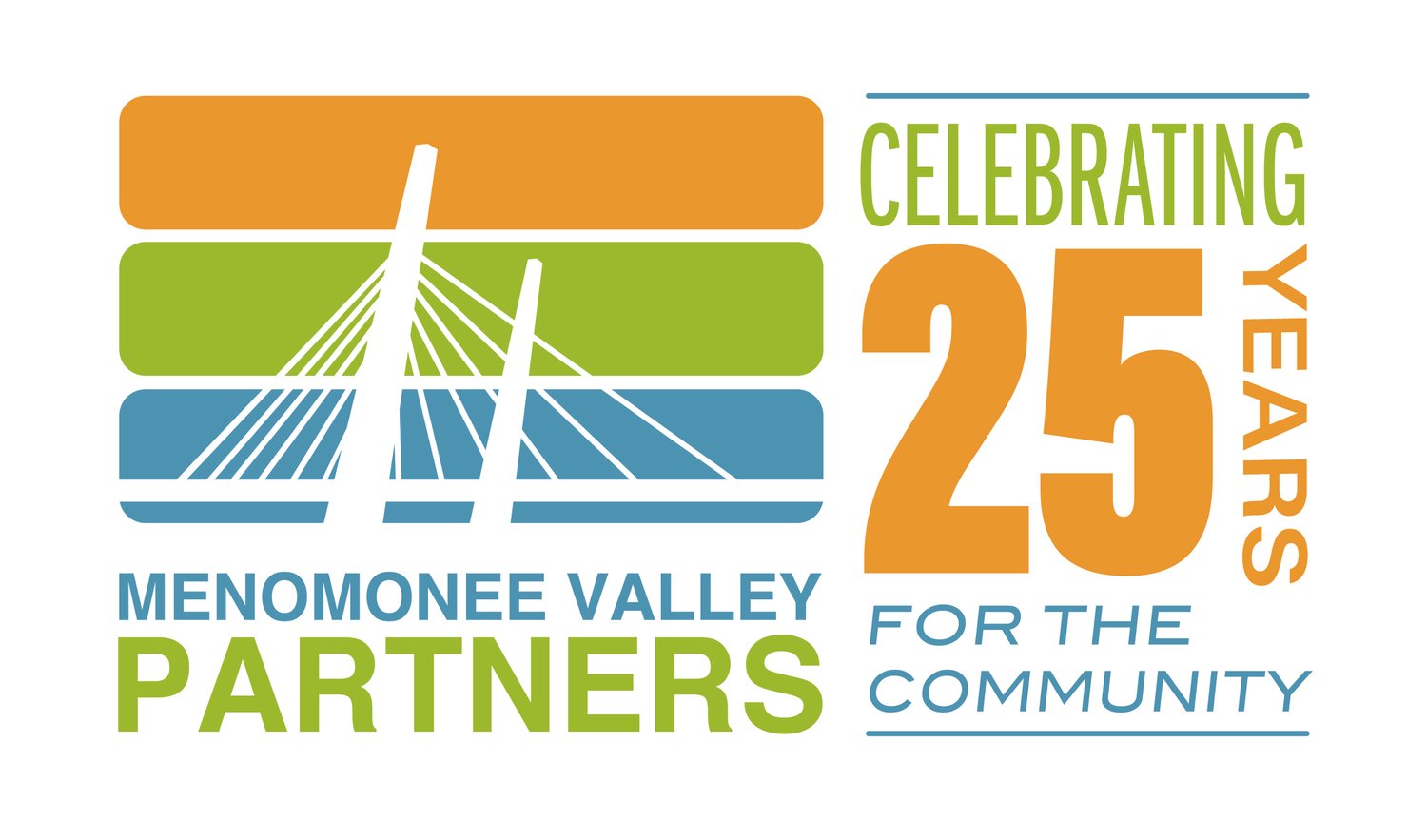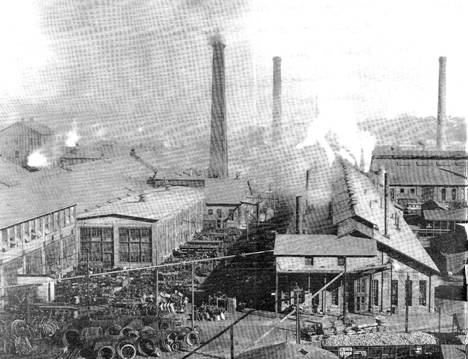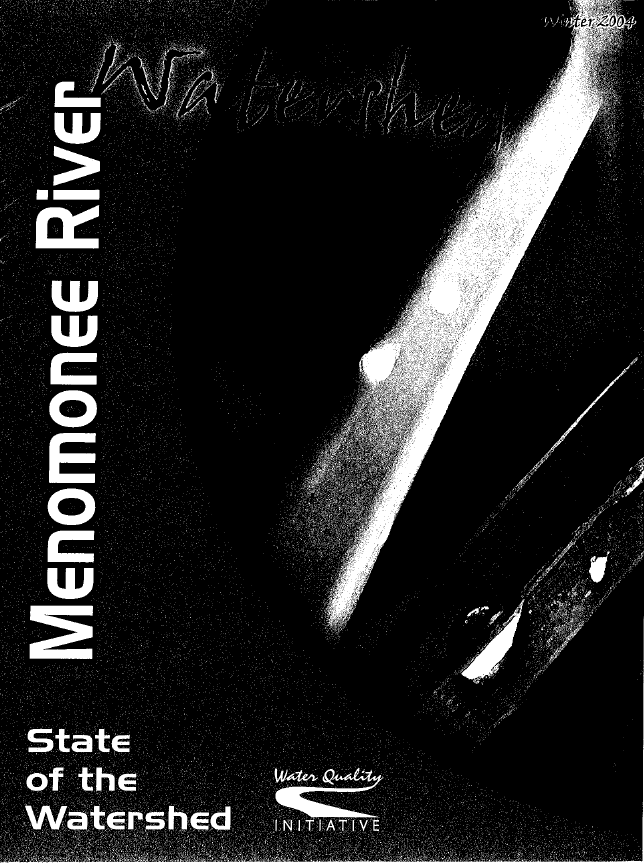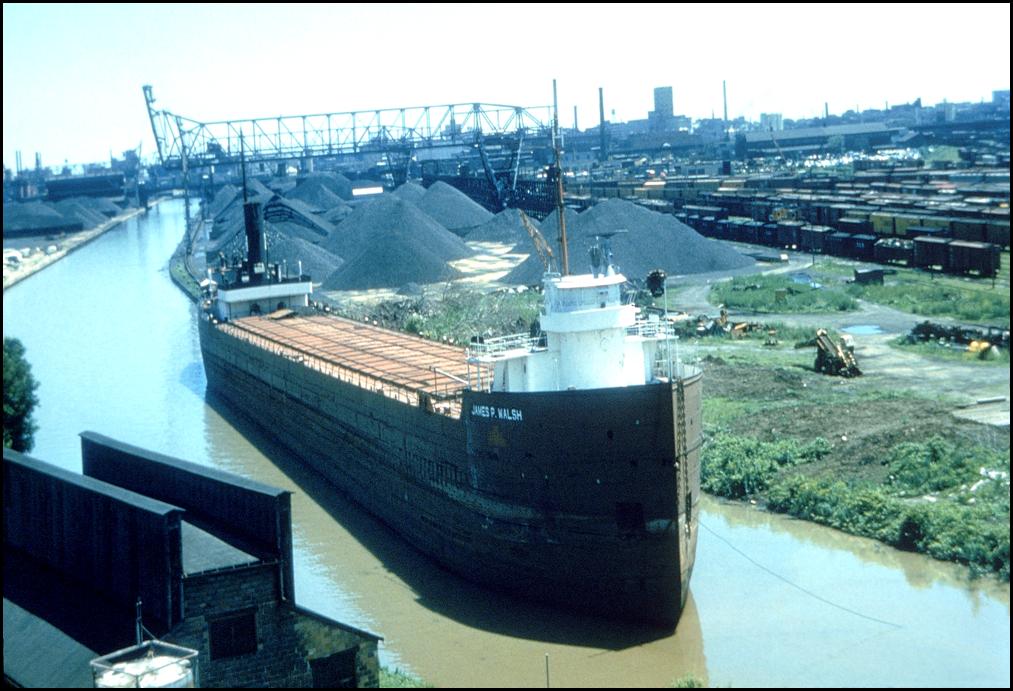
STUDIES & REPORTS
The Menomonee River Valley has become a national model of economic and environmental stability. Learn more through reports and guiding documents below.
Annual Report Archive - 2002-PRESENT
Take a look back at the Valley's progress in Menomonee Valley Partners’ Annual Report Archive.
Menomonee Valley Pierce & Bruce Sub-District Study
City of Milwaukee and Menomonee Valley Partners (May 2024)
An analysis of the Pierce & Bruce area conducted to establish land use recommendations for making future decisions regarding development. Prepared following increased interest in rezoning sites along Pierce and Bruce Streets.
This report recognizes limitations and constraints on land available for redevelopment in the Menomonee River Valley, recognizing that most vacant or underutilized lands in the Valley are brownfields that are costly to rehabilitate, and ensures that even the City’s most challenging properties can contribute positively to their surrounding areas.
Menomonee Valley Partners Strategic Direction
Adopted September 20, 2023
The Strategic Direction report is a roadmap that outlines strategies to navigate the Menomonee Valley Partner’s (MVP) current inflection point and ensures ongoing excellence and impact as a guide for MVP’s leadership. By scaling work appropriately, MVP can achieve longevity and future impact, maintaining its significance within the community. This roadmap guides MVP to adapt, grow, and continue to fulfill its role as a catalyst for positive change in the Menomonee Valley and surround neighborhoods.
The report’s Impact Strategy outlines an approach for MVP to preserve its legacy while propelling itself to new heights of influence and effectiveness. As a learning organization, MVP will refine and adjust its model while implementing these strategies to continue delivering exceptional impact in a sustainable manner.
Industry & Inclusion: Manufacturing Workforce Strategies Building an Inclusive Future
Urban Manufacturing Alliance & The Century Foundation (2021)
In 2020, The Century Foundation (TCF) and the Urban Manufacturing Alliance (UMA) convened a national cohort of eight organizations, including Menomonee Valley Partners, to share best practices and strategies to expand workforce models connecting diverse communities to manufacturing careers and identifying policies to scale these efforts.
The cohort determined that having the right models in place can ensure that unemployed and underemployed adults of all ages are able to obtain the skills necessary for a rewarding manufacturing career and opportunities for skills advancement and wage progression.
MVP’s profile begins on page 70 of the report.
Improving Job Access in the Menomonee Valley: Strategies to Connect and Strengthen Businesses and Neighborhoods
MetroGO! and the Southeastern Wisconsin Regional Planning Commission (August 2018)
This report provides essential information, data, and analysis, and identifies recommendations for collaborative transportation and workforce strategies to strengthen the Menomonee Valley and its businesses in a deeply competitive labor environment.
This report expands on previous last mile research with the following goals:
Determine employer job and transportation needs in the Menomonee Valley
Analyze and summarize data
Investigate job access challenges and insights from nearby neighborhoods
Convene experts and develop locally supported strategies and recommendations
Distribute findings
Menomonee Valley 2.0 Market Study
City of Milwaukee Department of City Development (2014)
In support of updating the City’s comprehensive area plan for the Menomonee Valley, this report studies industrial, labor, and real estate markets in southeastern Wisconsin and the Menomonee River Valley planning area in the City of Milwaukee.
Findings and their policy and planning implications are presented in three parts:
Findings from the stakeholder involvement process
Findings from an analysis of the state of the manufacturing market and labor market in southeastern Wisconsin
Findings from a land use analysis conducted for the Menomonee River Valley
This market study informed the Valley 2.0 planning process and provided a baseline understanding of economic conditions in the Valley.
Sustainable Design Guidelines
Menomonee Valley Partners and the City of Milwaukee Department of City Development (2017)
In 2004, Menomonee Valley Partners and the City of Milwaukee established sustainable building design guidelines for new development projects in the Menomonee River Valley. The guidelines, intended primarily for the newly created Menomonee Valley Industrial Center, were put in place to ensure high-quality redevelopment, environmental sensitivity, and energy-efficient construction.
The need for updating the original guidelines became clear over time as the Menomonee Valley Industrial Center reached full capacity while 40 acres of undeveloped riverfront land offered untapped potential at the Valley’s east end.
The updated guidelines, approved by the Redevelopment Authority of the City of Milwaukee (RACM) in September 2017, apply Valley-wide and are required for any new development or major renovation project receiving financial or land sale assistance from the City of Milwaukee or RACM.
Menomonee Valley Riverwalk Site Plan Review Overlay Zone
Menomonee Valley Partners and the City of Milwaukee Department of City Development (2017)
The Menomonee Valley Riverwalk Overlay zoning designation, approved by the Common Council in July 2017, is used to bookmark 25 feet along the Menomonee River’s edge for a future riverwalk as redevelopment occurs. The overlay, which accounts for Milwaukee Riverwalk’s first expansion beyond its original course, extends two miles westward from the confluence of the Milwaukee and Menomonee Rivers to Three Bridges Park. The overlay includes design standards to promote an integrated, pedestrian-friendly scale.
Independent Study: West St. Paul Ave Conceptual Streetscaping Plan
University of Wisconsin - Milwaukee, Department of Urban Planning (2023)
The proposed independent study by Louie Glotfelty identifies feasible, short-term solutions for streetscaping and placemaking along the West St. Paul Avenue commercial corridor in the Menomonee Valley. Informed by a robust series of stakeholder engagement efforts, it suggests utilizing existing resources and City of Milwaukee programs to enhance the pedestrian experience. The final concepts presented include: Enhanced Safety & Connectivity, Greenery & Aesthetics, and Street Activation, Public Art & Programming.
A Senior Capstone Proposal: St. Paul Avenue Revitalization
University of Wisconsin - Madison, Department of Landscape Architecture (December 2016)
This capstone by Mara Redding seeks to build on the foundation of the Menomonee River Valley's thriving urban industrial district and explore how green infrastructure may contribute to revitalization of West St. Paul Ave, an industrial corridor stretching roughly 10 blocks. She seeks to encourage industry growth and sustainable development, increase green infrastructure, enhance connectivity between project site and surrounding neighborhoods, and improve the pedestrian experience and access to public amenities. She investigates how ideas of ecological urbanism may inform the design of the corridor.
A Senior Capstone Proposal: East Valley Gateway FAB District
University of Wisconsin - Madison, Department of Landscape Architecture (May 2016)
This capstone by Chris Jansen seeks to build on the foundation of the Menomonee River Valley’s thriving urban industrial district. It explores how integrating the waterfront into a site posed for development can provide a social experience equitable to all. He investigates how ideas of landscape urbanism may inform the design of an urban food and beverage manufacturing district to help facilitate the economic vitality of an East Valley Gateway.
Redevelopment in Milwaukee’s Menomonee Valley: What Worked and Why?
Public Policy Forum (September 2014)
The most comprehensive study of the Valley’s revitalization to date, this report begins with a brief overview of the economic, environmental, and community improvements that have occurred in the Menomonee River Valley since the late 1990s. The work that brought about those outcomes is examined through five success factors deemed critical to the Valley’s revitalization.
2013 Menomonee Valley: State of the Valley Report
Menomonee Valley Benchmarking Initiative (November 2013)
An assessment of change in Milwaukee’s Menomonee River Valley and surrounding neighborhoods organized around the principles of sustainable development, this benchmarking initiative is an ongoing collaboration that systematically tracks and studies the community, environmental, and economic conditions of a place that is home to hundreds of Milwaukee businesses and adjacent to over 66,000 residents.
Report contents:
Bridging Valley Communities: Community Outreach and Marketing Plan
Urban Strategies (May 2007)
This report explores ways in which the economic development in the Valley can be connected with activity taking place in residential communities.
Connecting the South Side Neighborhoods to the Menomonee River Valley: A feasibility study for a Hands-On Environmental Education Satellite Center
Marilyn Goris (Spring 2006)
Interview data and an environmental scan are compiled to assess the feasibility of locating an Urban Ecology Center Branch in or near the Menomonee Valley. The Urban Ecology Center Menomonee Valley branch subsequently opened in 2012.
Stormwater Management Report, CMC Shops Area
Applied Ecological Solutions, Inc. (April 2005)
A hydrologic study and proposal for a stormwater management system on the site of the former Milwaukee Road factory.
Development Objectives for the Menomonee Valley Stockyards
Menomonee Valley Partners, Inc. (December 2004)
Summarizes in detail economic and environmental sustainability objectives for the former Milwaukee Stockyards, which supported the subsequent development of the current Canal Street Commerce Center.
Using the Menomonee Valley to Move from Land Development to Economic Development
Brian Reilly, Maureen Klovers, and Virginia Carlson (July 2004)
A summary of strategies and implementation actions to promote the strength of Milwaukee businesses in order to attract strong manufacturers.
Milwaukee’s Industrial Land Base: An Analysis of Demand and A Strategy for Future Development
MEDC Milwaukee and S.B. Friedman & Company (May 2004)
An assessment of the demand for industrial land in the City of Milwaukee and compilation of recommended strategies to best take advantage of demand.
A Cultural Resource Management Plan Specific to Menomonee River Valley Redevelopment Project Lands in the City of Milwaukee, Milwaukee County, Wisconsin
Great Lakes Archaeological Research Center, Inc. with funding from the Wisconsin Coastal Management Program (March 2004)
A full assessment and list of recommendations regarding the potential historical and cultural resources that exist in the Valley and recommendations for their care.
Menomonee River Watershed: State of the Watershed
Milwaukee Metropolitan Sewerage District, Wisconsin Department of Natural Resources, and the Southeastern Wisconsin Regional Planning Commission (2004)
An analysis of the health of the entire Menomonee River watershed using numerous criteria.
Integrating the Environment, the Economy, and Community Health: A Community Health Center’s Initiative to Link Health Benefits to Smart Growth
American Journal of Public Health (2004)
Peter McAvoy, Mary Beth Driscoll, and Ben Gramling of the Sixteenth Street Community Health Center discuss how community engagement, as facilitated by a community health center, can have a positive effect on the quality of brownfield redevelopment.
The Canal Street Corridor: A Framework for Redevelopment
Wenk Associates, Solomon E.T.C./WRT, and HTNB Corporation (2004)
This report contains an analysis of constraints and opportunities, considers alternative frameworks, and develops a final framework plan and summary report for redeveloping the Canal Street Corridor.
Urban Open Space Foundation Survey
The Urban Open Space Foundation (2003)
Uses interview data to explore ownership and management opportunities for public space in the Menomonee Valley.
Environmental Management Considerations for Site Redevelopment in Milwaukee’s Menomonee River Valley
Menomonee Valley Partners, Inc. Environmental Committee (November 2002)
This report employs data from the Wisconsin Department of Natural Resources and the U.S. Environmental Protection Agency to set forth physical and chemical data for the Menomonee Valley and give a general indication of the range and distribution of contaminants. Information in the report indicates that environmental issues in the Menomonee Valley are manageable and alleviates the perception that there are widespread, high levels of contaminants.
Menomonee Valley Cultural Resource Study
John Gurda (2002)
A collection of sources and narrative essay summarizing the history of the Menomonee River Valley.
Menomonee River Valley National Design Competition
Sixteenth Street Community Health Center (March 2002)
This document presents plans for the west end of the Menomonee River Valley that were considered as finalists in the national design competition.
At the Center of it All: The High-Road Strategy for Milwaukee’s Menomonee Valley
Center on Wisconsin Strategy with funding from Menomonee Valley Partners (June 2000)
Provided recommendations on how to maximize quality job growth and economic development in the Menomonee Valley.
A Vision for Smart Growth: Sustainable Development Design Charrette for Milwaukee’s Menomonee River Valley
Sixteenth Street Community Health Center (2000)
A compilation of work done by design experts collaborating to develop concepts of how the Menomonee Valley could be sustainably developed in both short and long time frames.
Market Study, Engineering, and Land Use Plan for the Menomonee Valley
Lockwood Green Consulting; Fluor Daniel Consulting; Trkla, Pettigrew, Allen & Payne, Inc; Edwards & Associates, Inc. with sponsorship from the City of Milwaukee, the Milwaukee Metropolitan Sewerage District, and the Menomonee Valley Business Association (October 1998)
This document presents data and recommendations regarding the best way to foster economic development in the Menomonee Valley.
Characteristics of sustainable brownfields projects
The United States Environmental Protection Agency, Office of Solid Waste and Emergency Response (July 1998)
A substantial guide to the science and economics of sustainable brownfield redevelopment.
Other Resources
Check out information on the Valley’s history presented by Menomonee Valley Partners or through the Milwaukee Public Library’s Milwaukee Road Archives.































